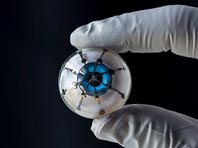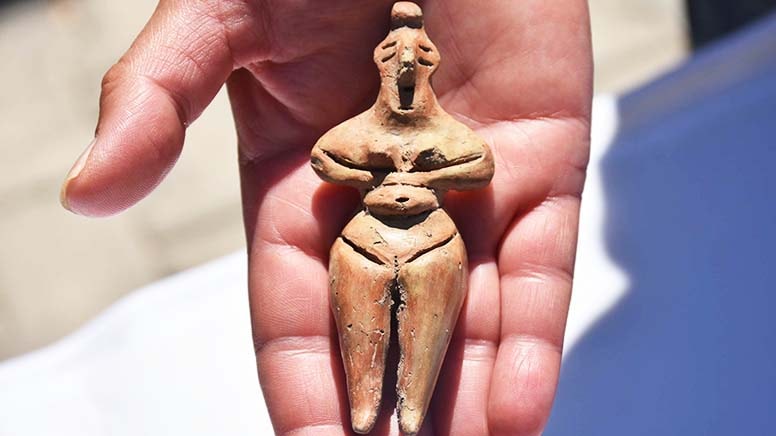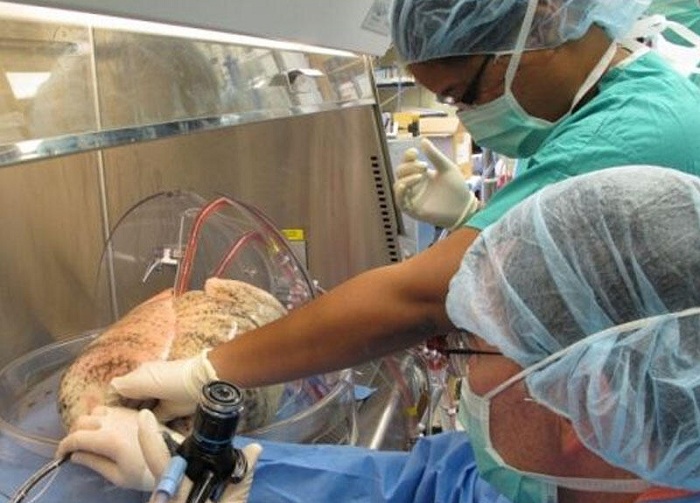
- A-
- A
- A+
Scientists use 3D printing to build a new prototype 'eyeball' that can detect changes in light levels
Scientists have taken another important step towards building the world's first bionic eye, which could give millions of blind people the chance to see again.
In a world first, a team of researchers have built a three-dimensional artificial 'eyeball' capable of detecting changes in light levels.
The bionic eye, which mimics the function of the retina in order to restore sight, works in tandem with an implant to convert the images it sees into electrical impulses for the retinal cells, which carry image signals back to the brain.
By using 3D printing, scientists were able to produce the prototype much faster than previous efforts – sparking hope this could be a viable commercial solution in future.
However, there is no date on when a final version will be ready for patients.
Researchers say the next step is to create a prototype eyeball with more light receptors to re-create a greater quality of sight.
They are also looking to find a way to 3D print the same technology onto a softer material, which could then be inserted into a real eye socket.
University of Minnesota researchers created the artificial eyeball for the first time using a 3D printer to add light receptors onto the hemispherical surface, which is half a sphere.
It is the first step toward creating a 'bionic eye' that could someday restore sight for blind or partially-sighted people.
Bionic eyes could also be used to enhance the vision of sighted people.
'Bionic eyes are usually thought of as science fiction, but now we are closer than ever using a multimaterial 3D printer,' said Michael McAlpine, a co-author of the study.
Scientists had figure out how to print electronics onto a curved surface.
Similar News
Links




 Elm TV
Elm TV
 Photo
Photo
 Video
Video





